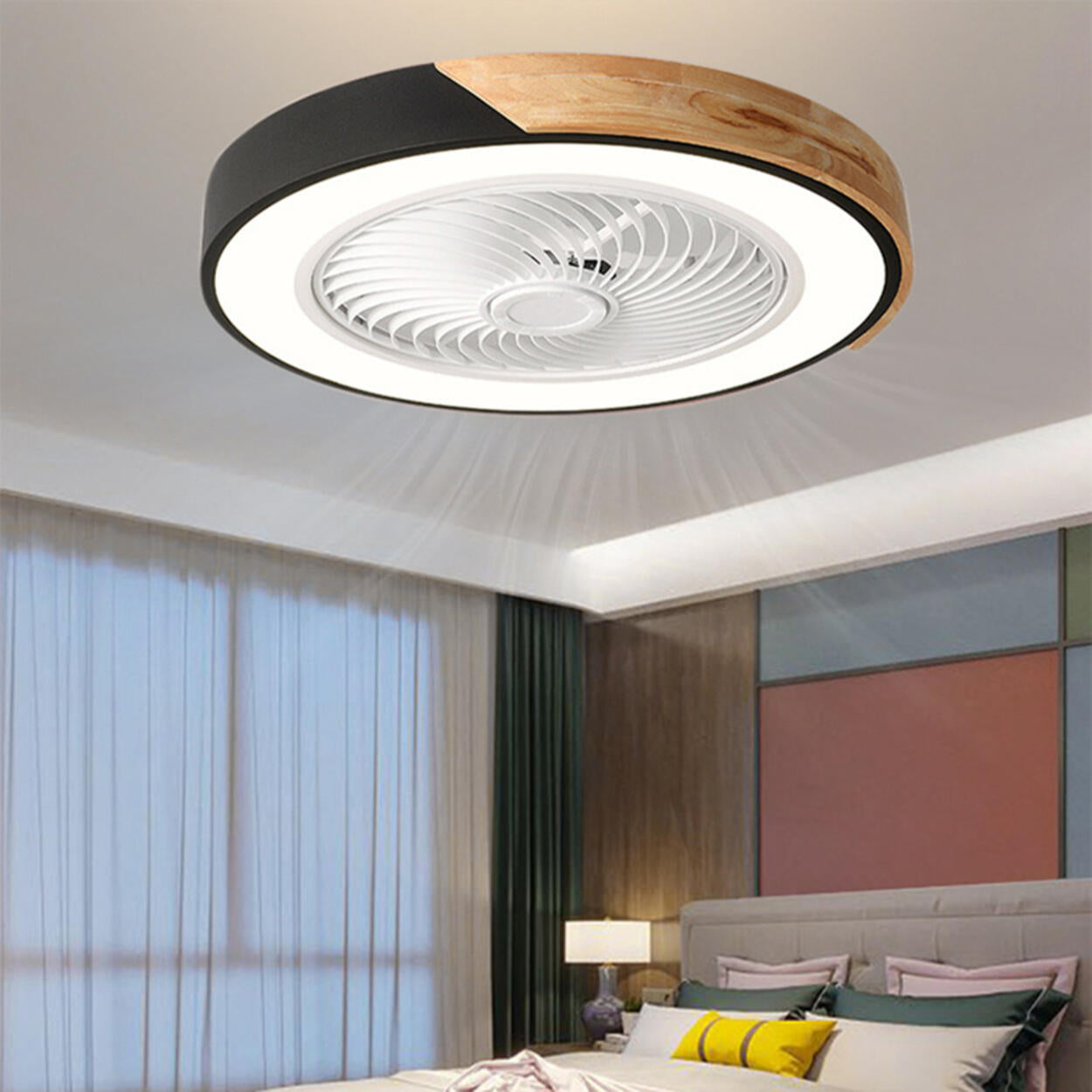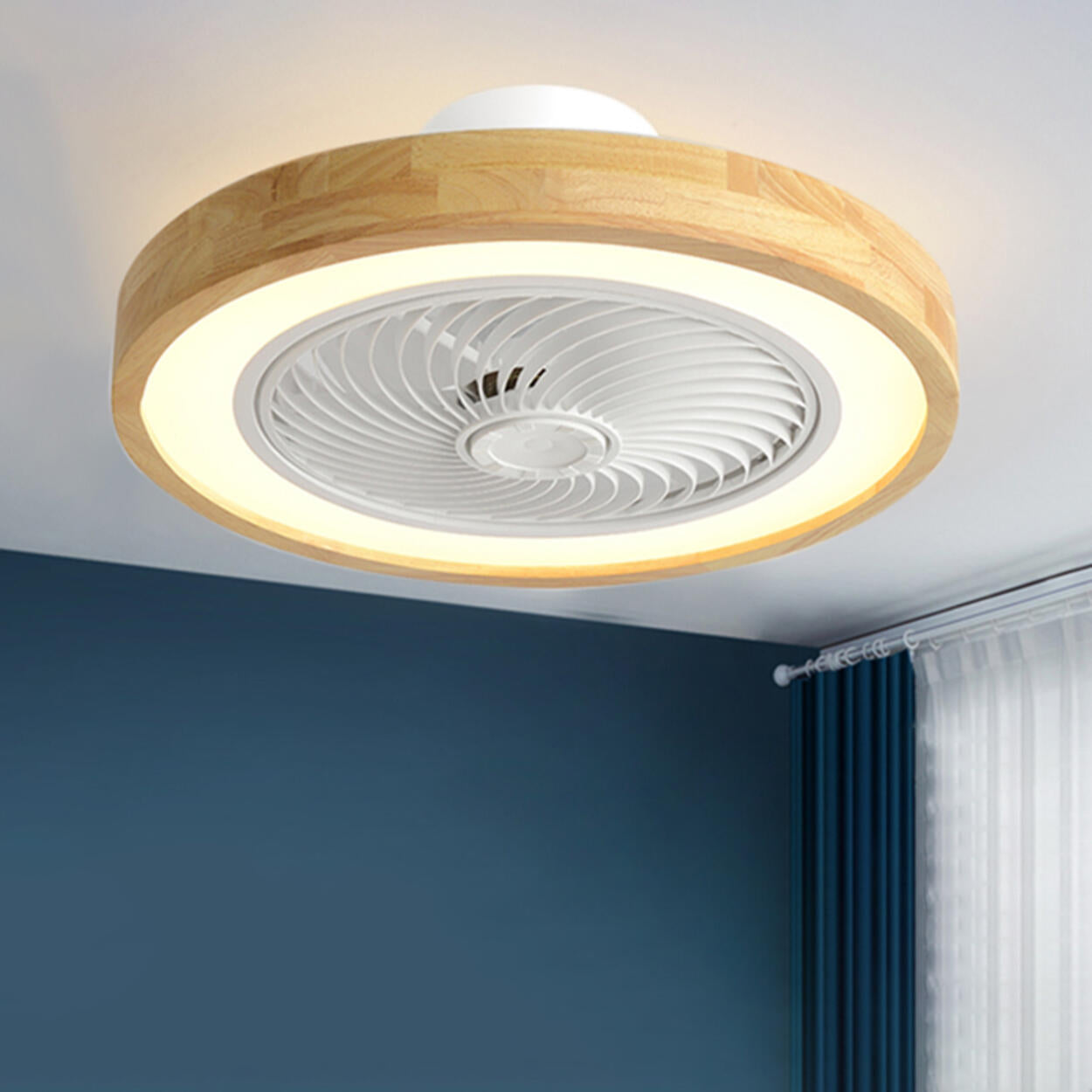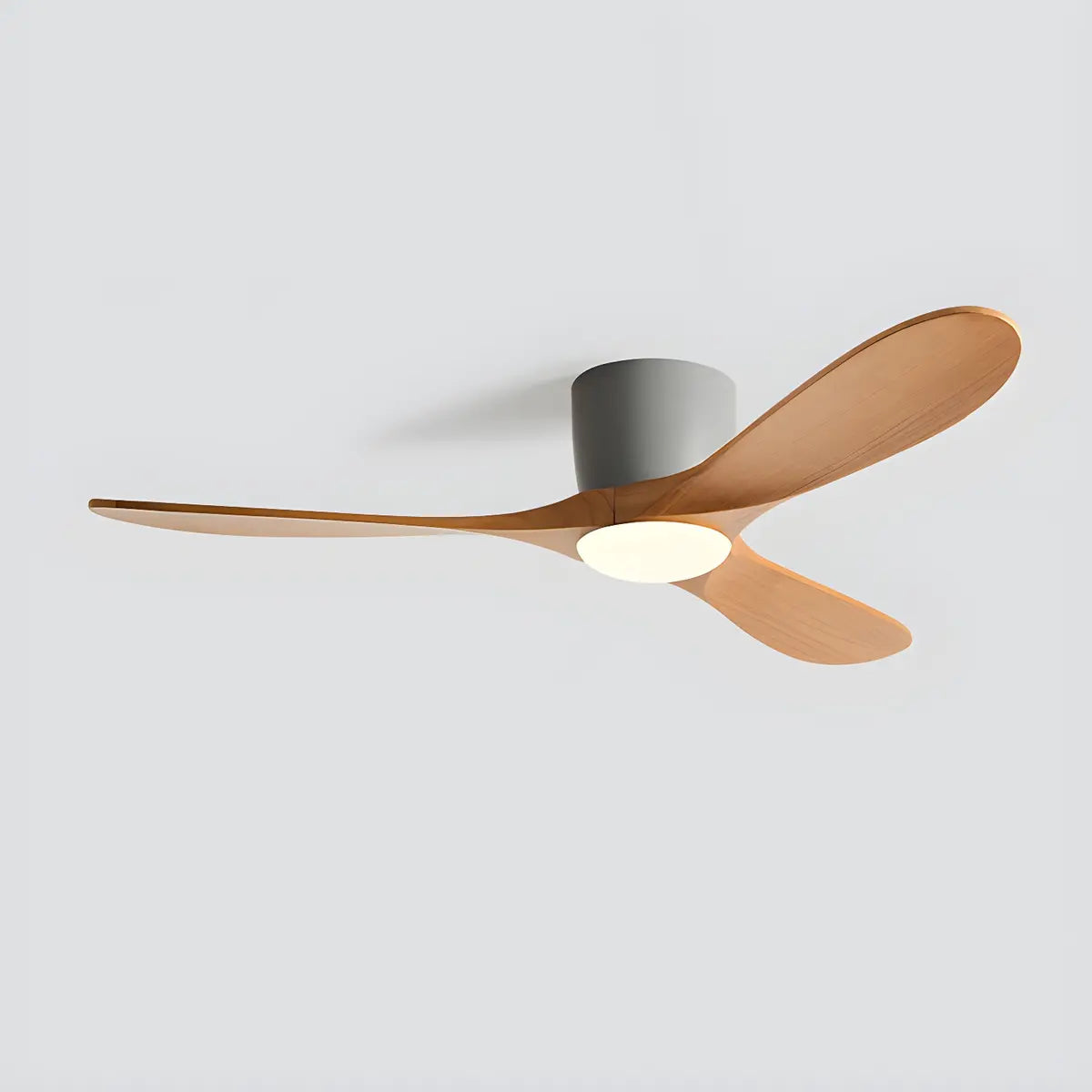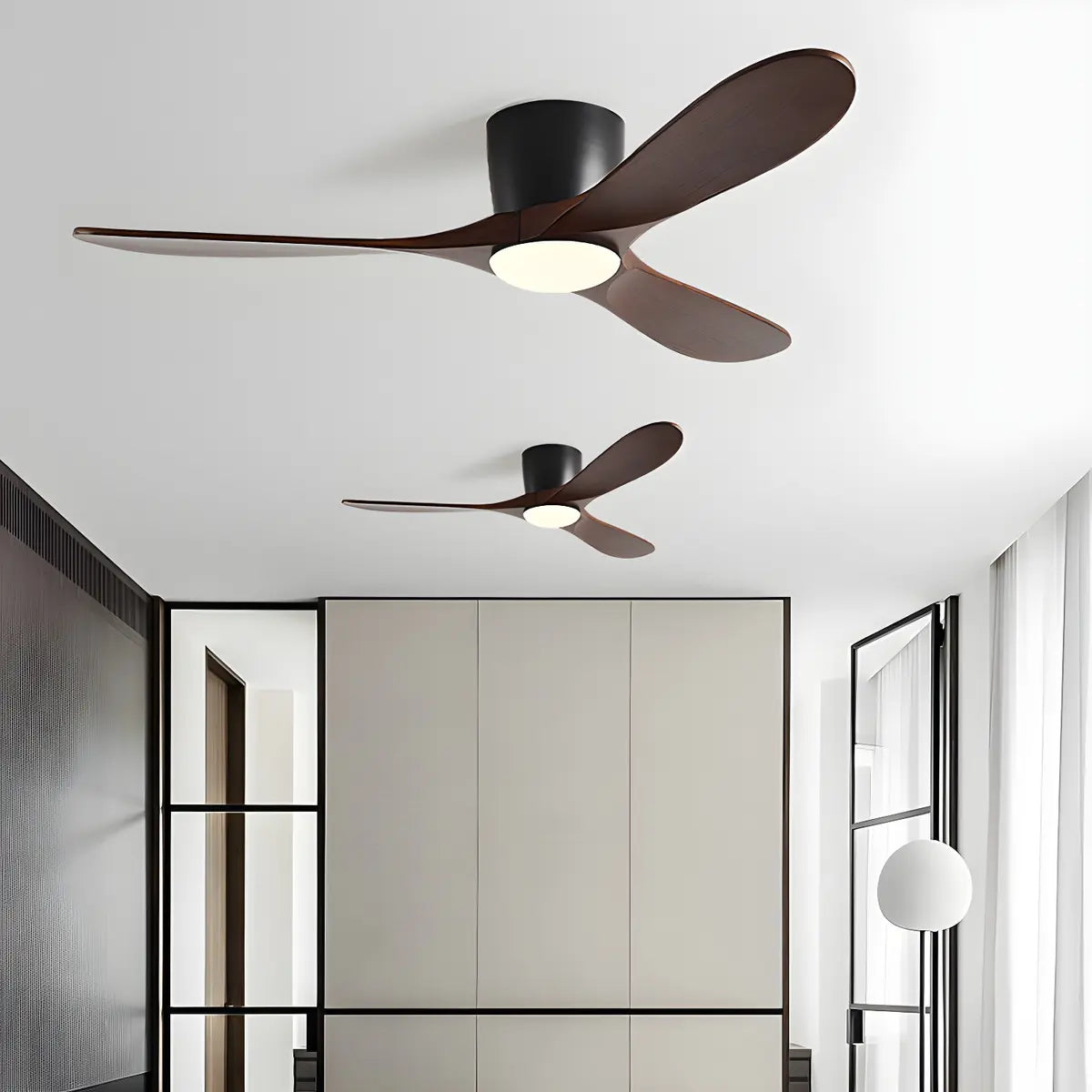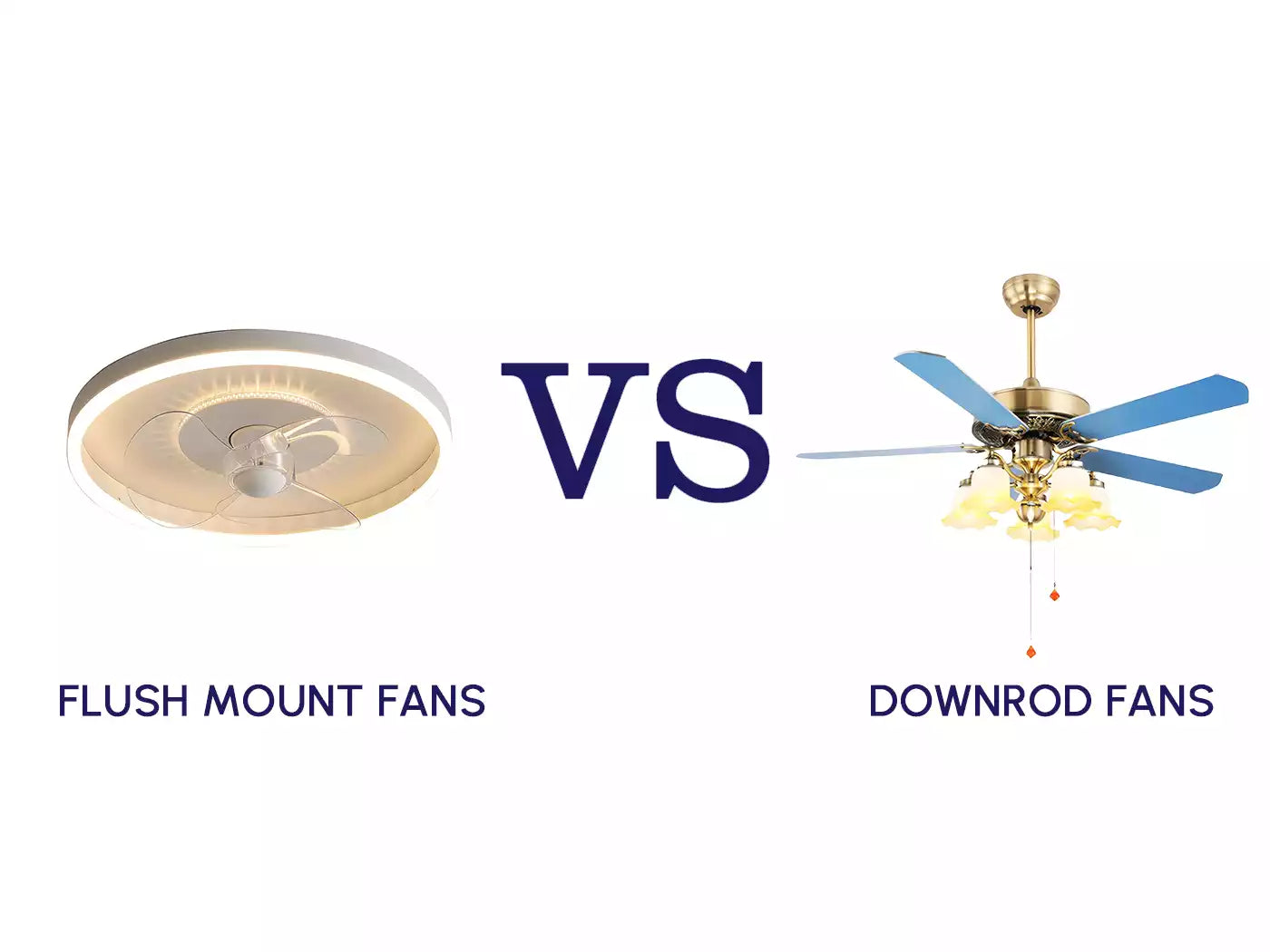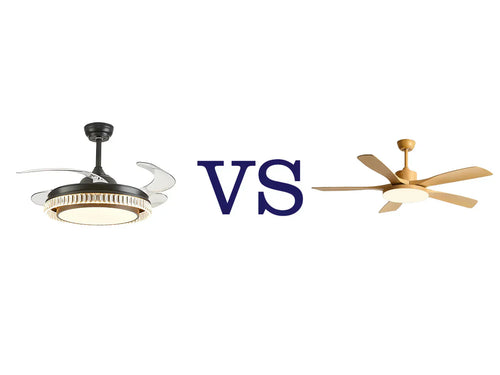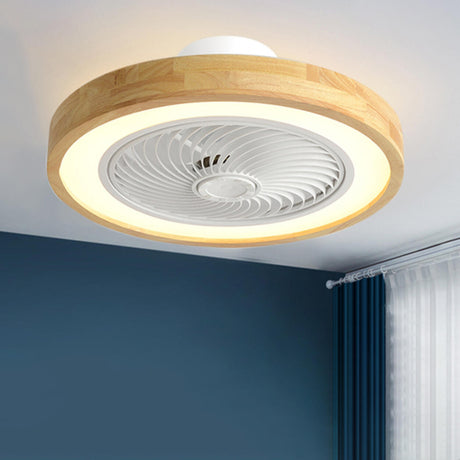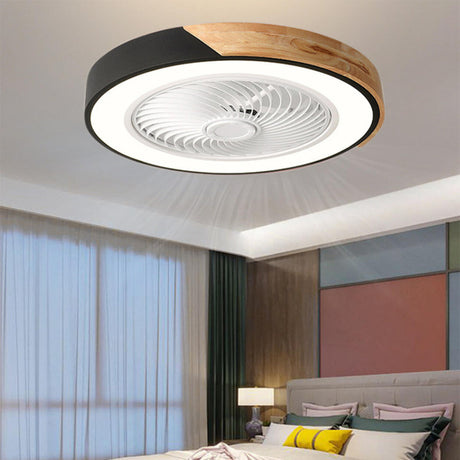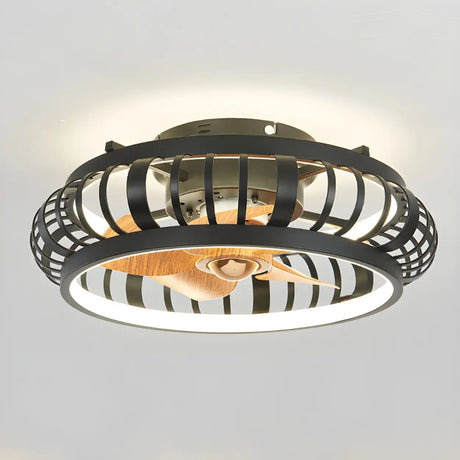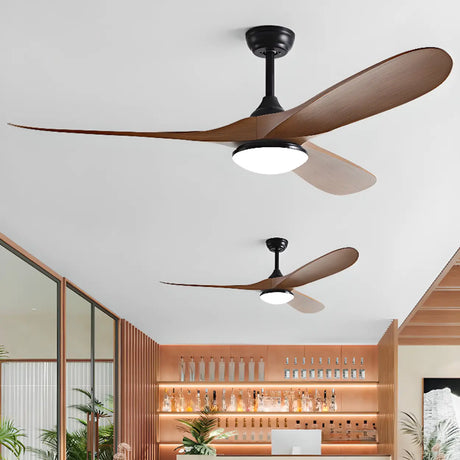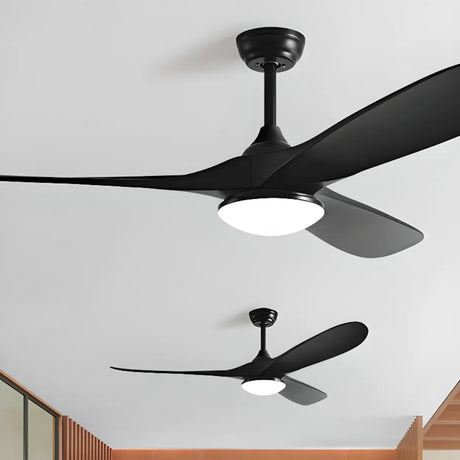When choosing a ceiling fan, most homeowners will encounter a question: should they choose a downrod ceiling fan or a flush mount ceiling fan? They look similar, but in fact, they are applicable to different spaces, installation heights, and wind effects.
This guide will help you simply sort out the differences between downrod vs flush mount ceiling fans and choose the one that is truly suitable for your home.
Table of Contents
What is a Downrod Ceiling Fan?

A downrod ceiling fan is exactly what it sounds like-a ceiling fan that hangs down from the ceiling using a metal rod called a "downrod."
This setup is perfect for rooms with high ceilings because it brings the fan closer to the living space, helping to circulate air more efficiently and keep you cool.
Key features:
- Adjustable downrod length - Typically offers 12-72 inch downrod options for customized installation based on ceiling height.
- Optimized airflow circulation - Fan blades positioned with adequate clearance from ceiling for maximum air movement efficiency.
- Ideal for high ceilings - Provides visual balance in rooms with tall ceilings, preventing the fan from appearing undersized.
- Reduced vibration and noise - Downrod design effectively isolates vibration transfer to ceiling structure.
- Reversible motor function - Most models feature reversible rotation for both summer cooling and winter heating circulation.
- Extended airflow reach - Capable of covering larger room areas with effective air distribution.
What is a Flush Mount Ceiling Fan?
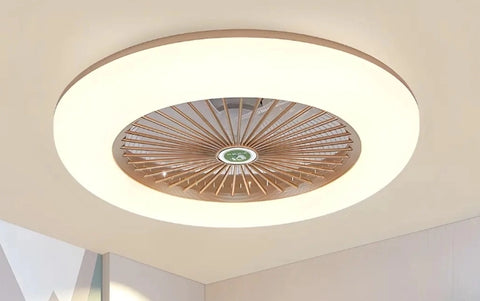
A flush mount ceiling fan, also known as a "hugger fan," mounts directly to the ceiling without any downrod.
This design saves vertical space, making it ideal for rooms with low or standard ceiling heights. While they sit closer to the ceiling, many flush mount fans still deliver plenty of breeze for smaller or cozier spaces.
Key features:
- Space-saving design - Mounts directly against ceiling to maximize available room height.
- Perfect for low ceilings - Specifically designed for rooms with 8-foot or lower ceiling heights.
- Streamlined appearance - Creates clean, unobtrusive look that blends seamlessly with ceiling line.
- Simple installation - Direct mounting system offers straightforward installation process.
- Compact profile - Low-profile design preserves valuable vertical space in the room.
- Optimal for smaller rooms - Best suited for small to medium-sized room applications.
Downrod vs Flush Mount Ceiling Fan: Which Is Best for You?
Next, we'll compare downrod and ceiling fans from multiple angles to see which is better suited to your space needs.
Airflow strength

Downrod fans typically provide stronger airflow because they hang lower, allowing the blades to move more air around the room.
Flush mount fans, while closer to the ceiling, can still cool effectively but are generally better suited for smaller rooms or areas where you don't need as powerful a breeze.
Sound level
Flush mount fans often operate more quietly than downrod fans, primarily because they have fewer moving parts and connection points. The shorter distance between the motor and ceiling mount reduces potential vibration points that can create noise.
Downrod fans can develop noise issues if the downrod isn't properly balanced or if connections become loose over time. However, high-quality downrod fans with proper installation and maintenance can be just as quiet as flush mount options.
To minimize noise with either type:
- Choose fans with quality motors
- Ensure proper installation and balancing
- Regular maintenance and cleaning
- Check for loose screws periodically
Ceiling height fit
If your ceilings are 8 feet or lower, a flush mount fan is usually your best bet since it won't hang down into the living space.
For ceilings higher than 8 feet, a downrod fan helps position the blades at the optimal height-usually 8 to 9 feet from the floor-for better air circulation.
Design and look

Downrod fans add visual interest with their hanging design and often suit traditional or spacious rooms.
Flush mount fans have a sleek, minimalist look that fits well in modern or compact spaces where you want to keep things simple.
Tips: Modern and minimalist décor generally favors flush mount fans for their clean, unobtrusive appearance. Traditional, farmhouse, or industrial styles often incorporate downrod fans as decorative elements that complement the overall design theme.
Setup ease
Flush mount fans are generally easier to install because they have fewer components and connection points. The direct ceiling mount is straightforward, and there's no downrod to balance or adjust.
Downrod fans require a bit more work to install. The rod length has to be measured and matched to your ceiling height, and wiring can be a little trickier. Because of this, professional installation is often recommended.
When to call an electrician:
- If you're adding a new electrical box.
- If your ceiling box isn't rated for fan weight.
- If you're uncomfortable with electrical connections.
- If you're installing a heavy fan or long downrod.
Costs
Downrod fans typically cost between $150 and $400, with installation often adding $100 to $200 due to the more complex setup. Flush mount fans usually range from $100 to $300 and generally have lower installation costs, often under $100, making them a more budget-friendly option.
Quick Comparison: Key Differences at a Glance
| Feature | Downrod Fans | Flush Mount Fans |
| Ceiling Height | 9+ feet recommended | 8 feet or any height |
| Airflow performance | Superior (when properly positioned) | Good for smaller spaces |
| Installation | More complex, may need help | Simpler, DIY-friendly |
| Visual Impact | Can dominate space | Clean, unobtrusive |
| Noise Level | Variable, depends on quality | Often quieter |
| Price Range | $150 - 400 | $100 - 300 |
| Maintenance | Slightly more complex | Easier to clean and maintain |
| Best Room Types | Large rooms, high ceilings | Small-medium rooms, low ceilings |
Buying Guide: How to Choose the Right Fan for You
When buying a fan, different needs determine different choices. Next, we will help you sort out which fan is more suitable for various situations.
Choose a downrod fan when:
- Your ceiling is 9 feet or higher - You have the clearance for safe installation.
- You have a large room (living room, master bedroom, family room) that needs maximum air circulation.
- Cooling efficiency is your top priority - You want the best possible air movement.
- Your style is traditional, farmhouse, or industrial - The downrod complements your décor.
- You don't mind a more complex installation.
- You're making a long-term investment - When you want a fan that will last for many years.
Choose a flush mount fan when:
- The ceiling height is 8 feet or lower.
- You have a smaller room (bedroom, study, hallway) where space is at a premium.
- You want the room to feel more spacious - Visual cleanliness is important to you.
- Your style is modern or minimalist - You prefer clean, uncluttered lines.
- Want easier installation and maintenance.
- Need a stable, quieter fan without wobbling.
Conclusion
There's no universal "best" choice between downrod vs flush mount ceiling fans-the right answer depends entirely on your specific situation. Your ceiling height will largely dictate your options, but within those constraints, consider your room size, design preferences, cooling needs, and maintenance comfort level.
Before making your final decision, take careful measurements of your space, consider your long-term needs, and don't rush the process. A well-chosen ceiling fan will serve you for many years, providing comfort and enhancing your home's appeal.
Remember: safety should always be your first priority. When in doubt about installation requirements or electrical work, consult with a qualified electrician. The small investment in professional installation is worth the peace of mind and proper function of your new ceiling fan.
FAQs
Are flush mount ceiling fans better than downrod?
Are flush mount ceiling fans better than downrod?
Flush mount ceiling fans are better for rooms with low ceilings as they save space and offer a clean look. Downrod fans work best in rooms with high ceilings, providing better air circulation. The right choice depends on your ceiling height and airflow needs.
What is the difference between hugger and downrod ceiling fans?
What is the difference between hugger and downrod ceiling fans?
Hugger fans mount directly to the ceiling without a downrod, making them ideal for low ceilings. Downrod fans hang from a rod and are better for high ceilings to improve airflow.
Are fans better with a downrod?
Are fans better with a downrod?
Fans with a downrod usually deliver better airflow in rooms with high ceilings by placing the blades at an ideal height. For low ceilings, flush mount fans are typically the safer and more space-efficient option.
Is it better to have a flush mount ceiling fan?
Is it better to have a flush mount ceiling fan?
A flush mount ceiling fan is better for low ceilings since it saves space and lowers the risk of accidents. However, it might not circulate air as effectively as a fan with a downrod.




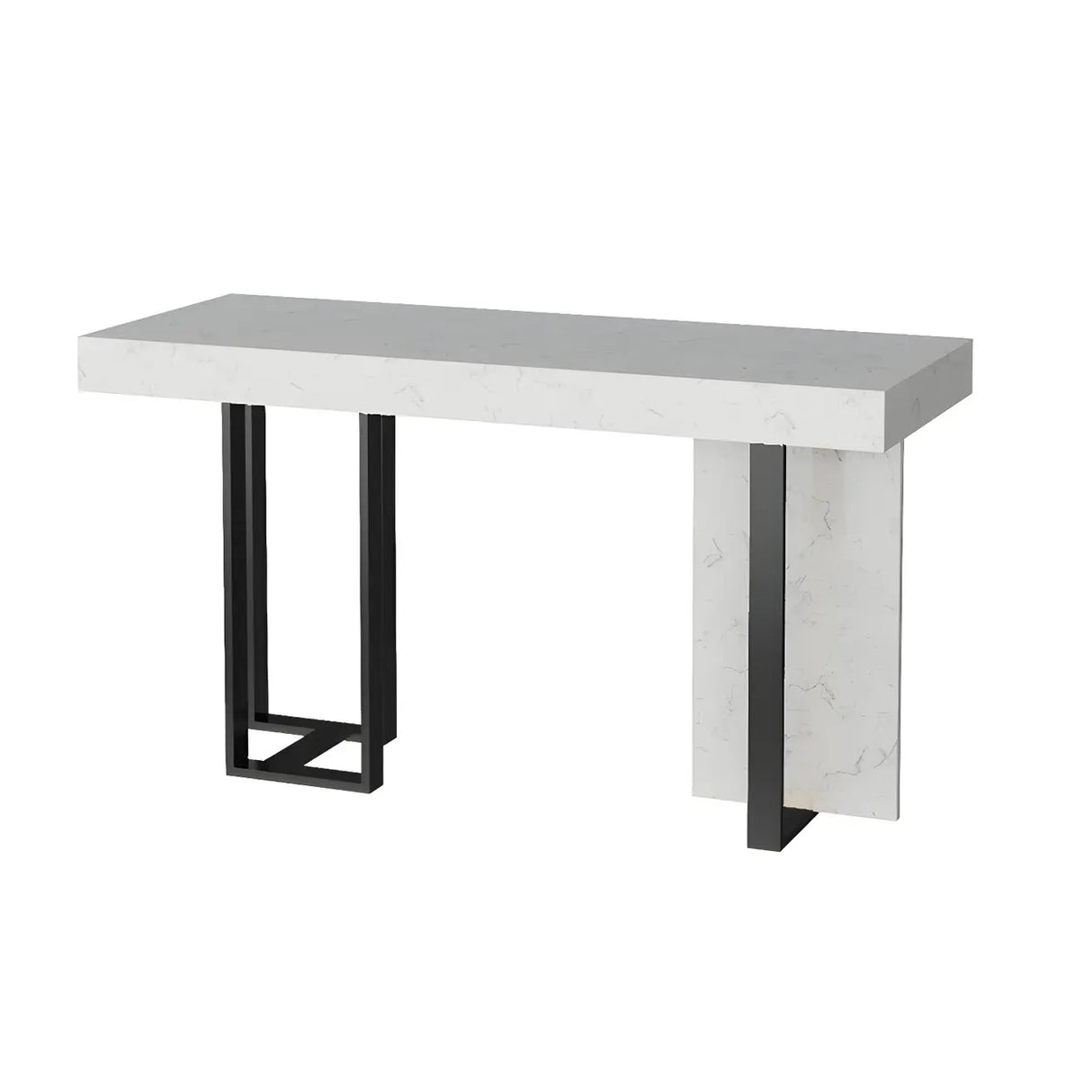



















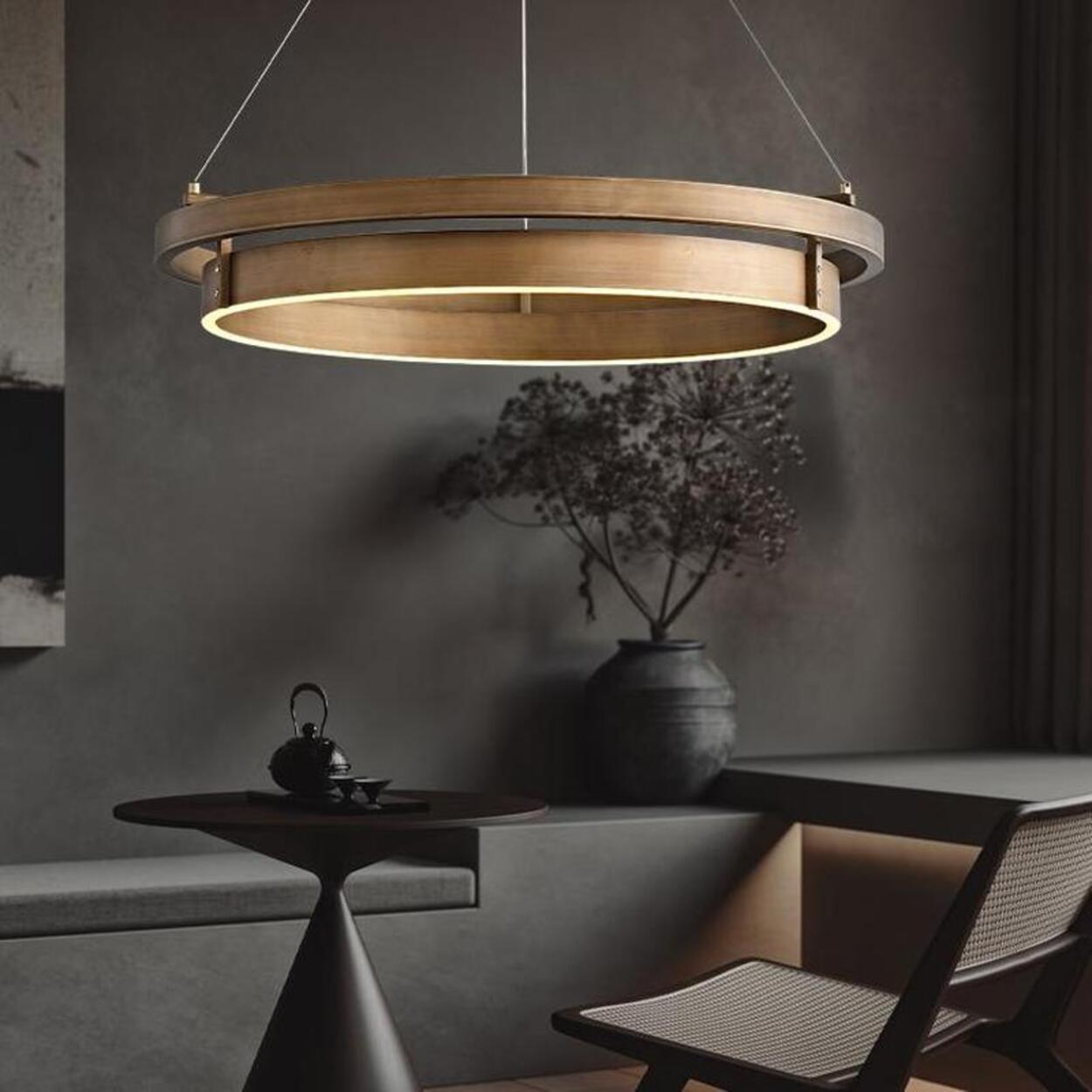
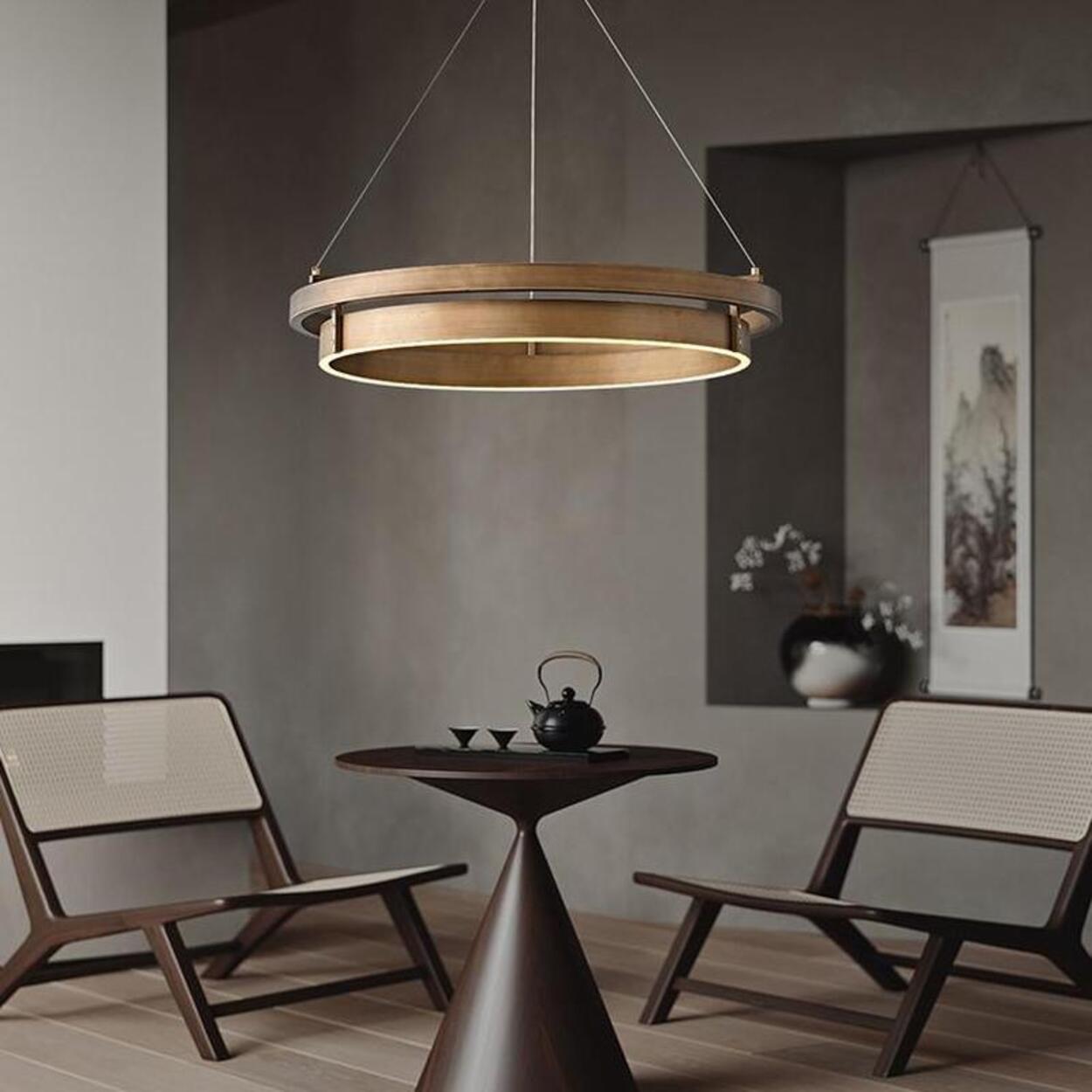


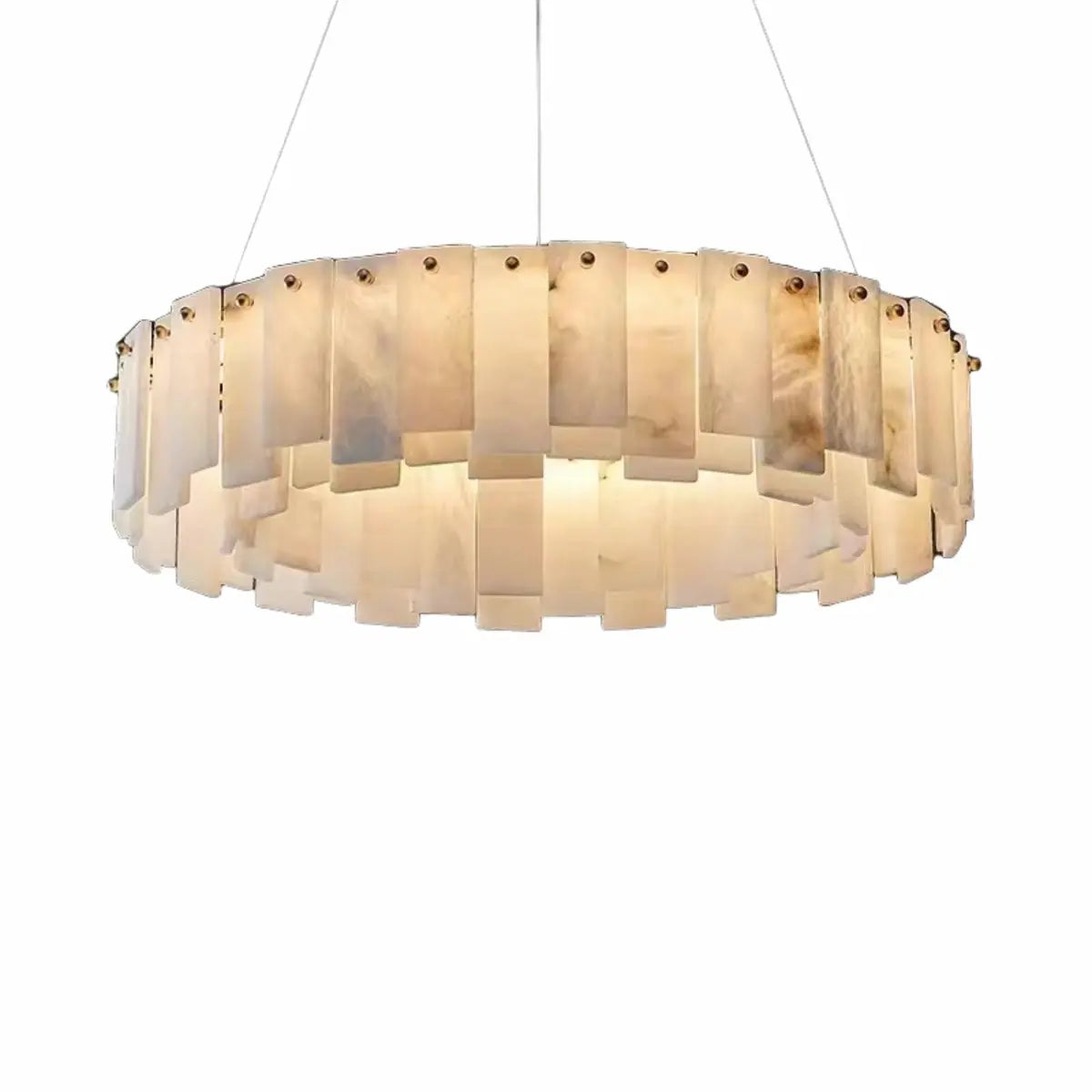








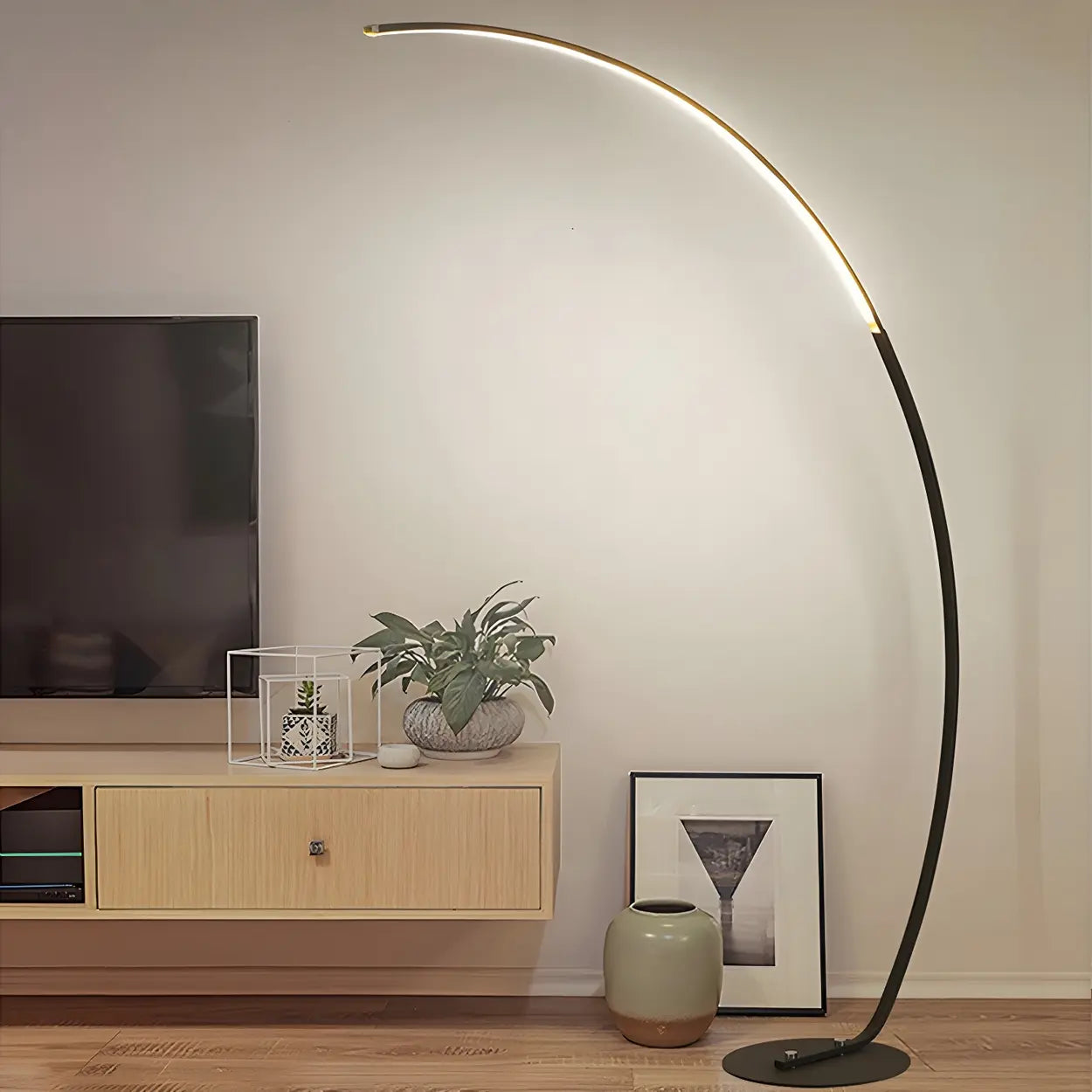


![10 Best Floor Lamp for Reading [2025 Review]](http://www.homebaa.com/cdn/shop/articles/banner_c990b0a4-4743-4902-b6be-5609f7a21a90.webp?v=1747357941)











![How to Choose the Coffee Table Height? [2025 Newest Guide]](http://www.homebaa.com/cdn/shop/articles/coffee-table-height.webp?v=1749523259)


